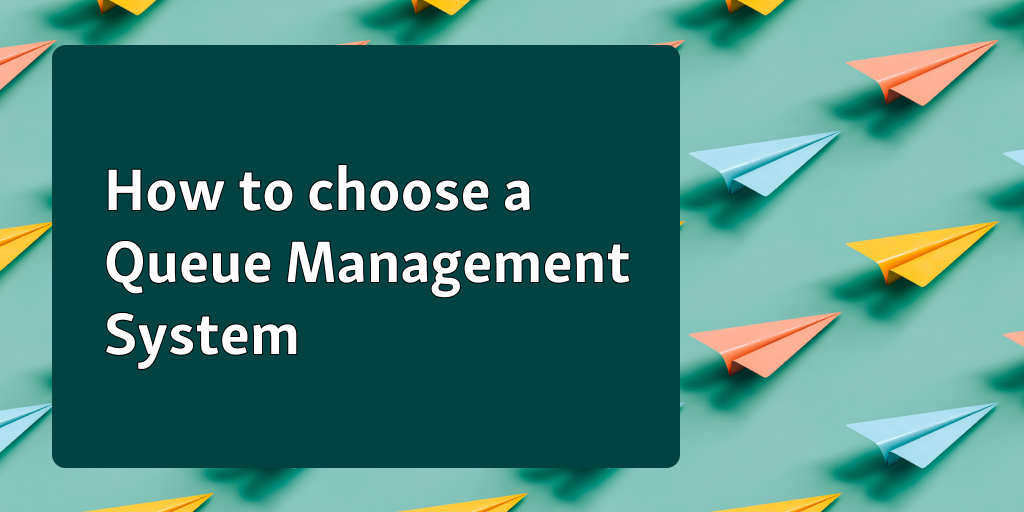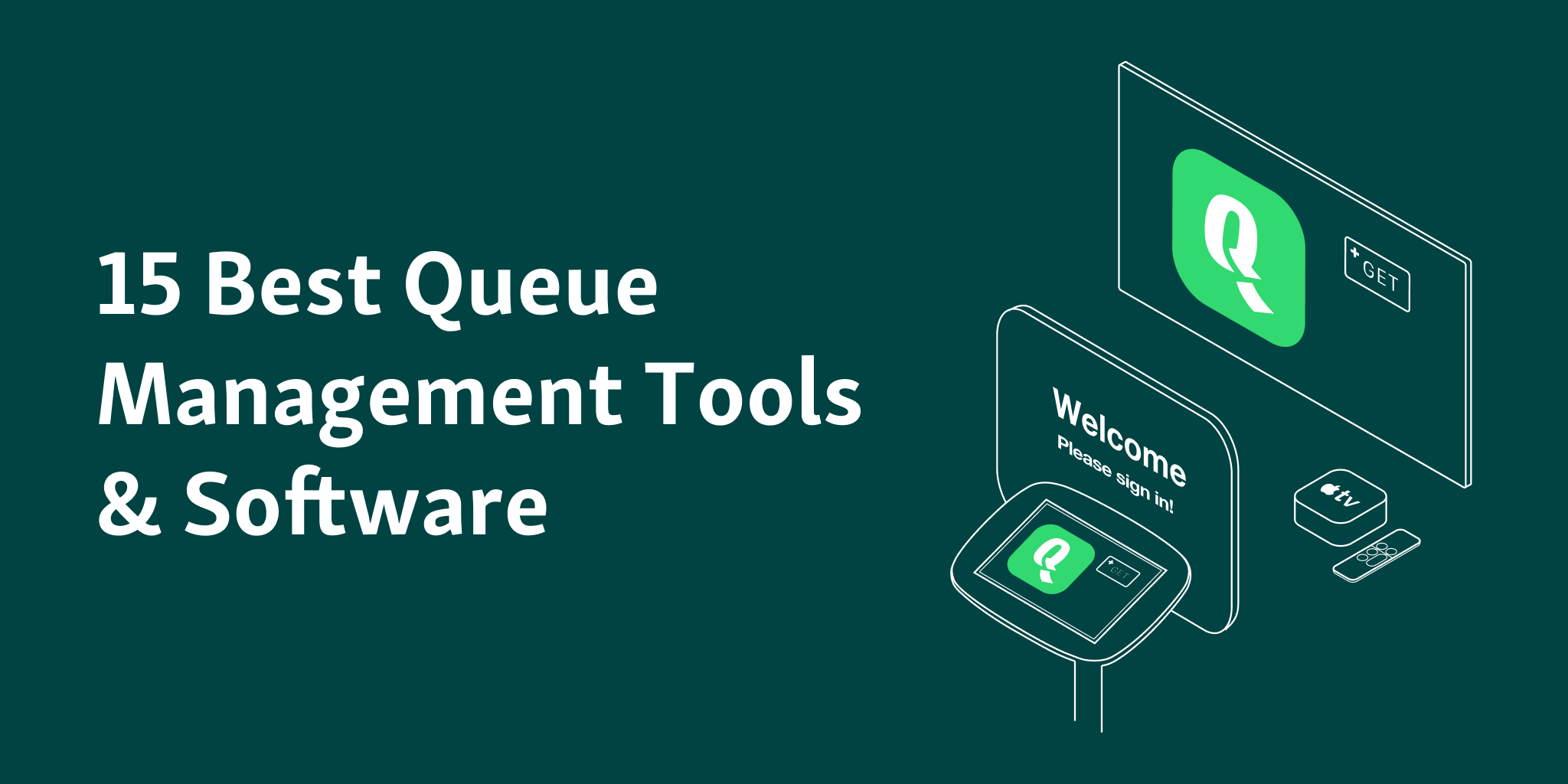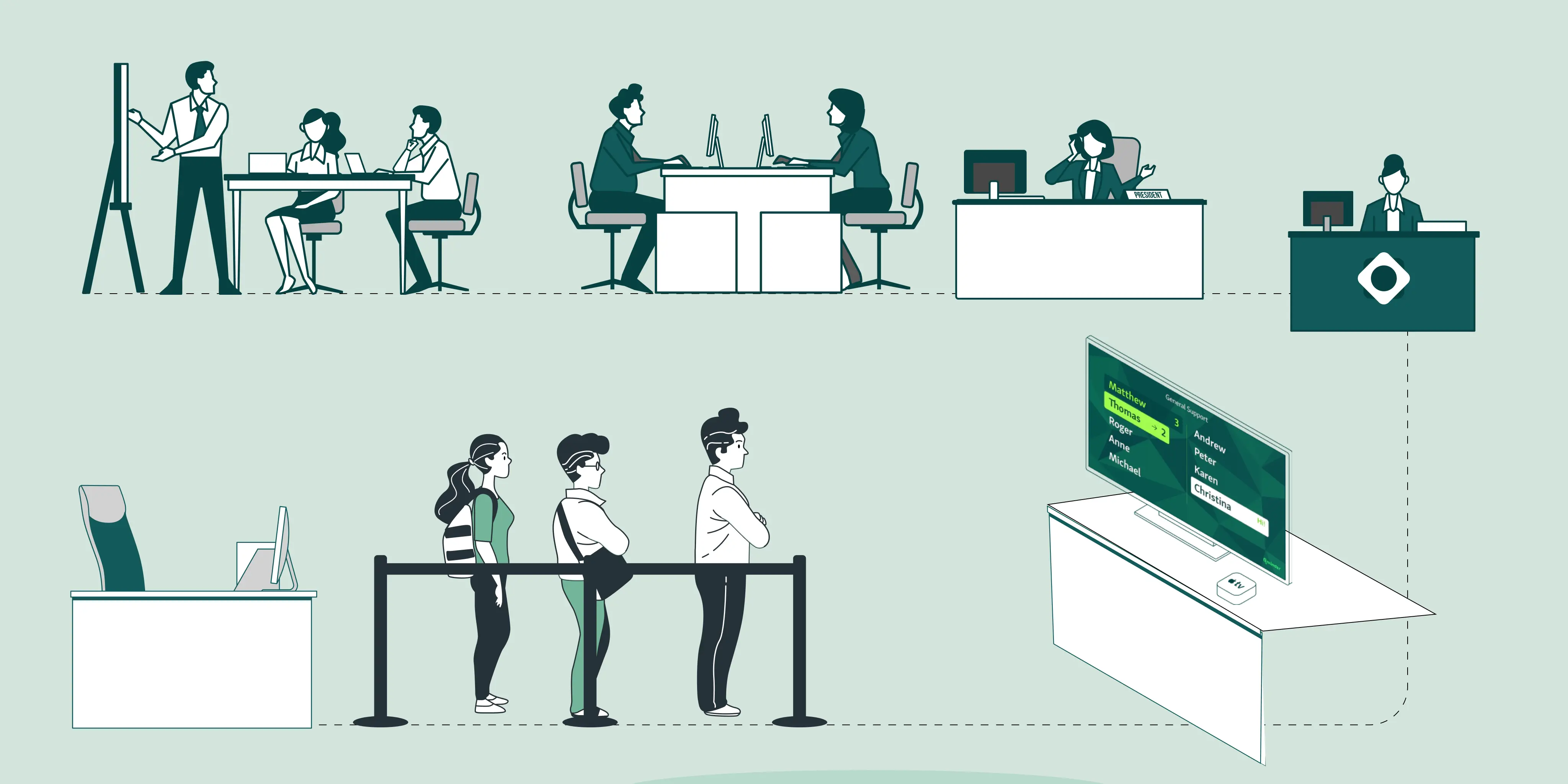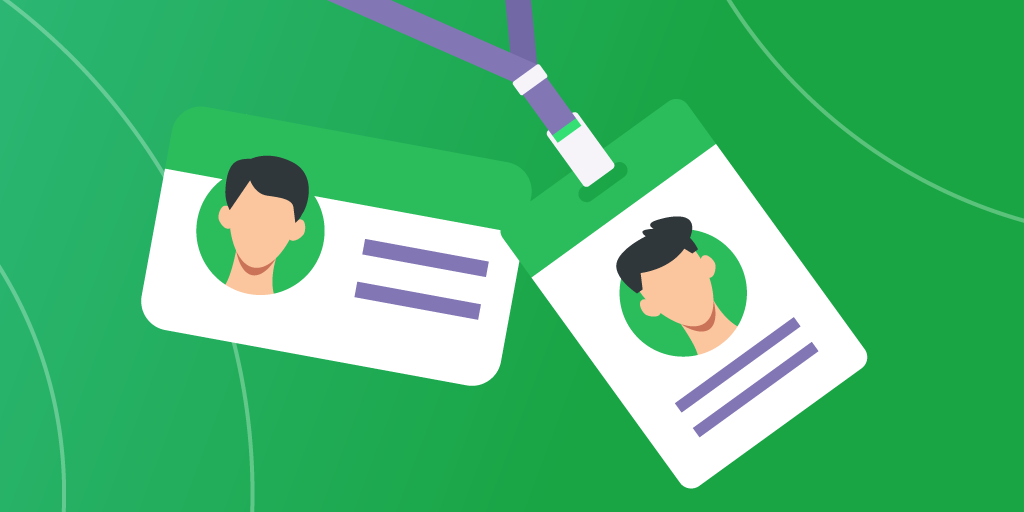Efficient scheduling is essential for businesses and public services to optimize operations and improve customer experiences.
One of the key decisions organizations face is whether to offer walk-in services or schedule appointments in advance. Both approaches come with their own advantages and challenges.
Walk-ins provide flexibility but can lead to overcrowding and longer wait times. Appointment scheduling offers better control and predictability but may be less flexible for customers.
According to a study by PwC, 32% of customers would stop visiting a business after a single poor experience, underscoring the importance of a well-planned scheduling system.
In this blog, we’ll explore the differences between walk-ins and appointments, their benefits, and how choosing the right approach can enhance your operations.
What is a Walk-in Appointment?
A walk-in refers to a customer who shows up without an appointment, often expecting to be served on a first-come, first-served basis. Walk-ins are common in many industries, especially when services are needed urgently or customers have no set schedule. However, while walk-ins offer spontaneity, they can be tricky to manage, especially during peak times when customer volume increases.
Here are some distinct characteristics of walk-ins:
Flexibility: No prior scheduling required, allowing customers to come in at their convenience.
Convenience: Ideal for businesses where customers’ schedules are unpredictable.
Casual atmosphere: Helps foster a more relaxed and informal service environment.
The Benefits and Drawbacks of Walk-ins
While walk-ins offer a flexible and convenient approach for customers, they also present challenges for businesses, such as overcrowding and unpredictability. Understanding the benefits and drawbacks can help determine when walk-ins are the right choice for your business.
Pros
Flexibility for Customers: Walk-ins allow customers to receive services at their convenience, without the need to commit to a specific time slot. This flexibility appeals to people who need immediate service or cannot plan ahead.
Spontaneity: For businesses that cater to customers with unpredictable schedules, walk-ins provide an easy option. Customers can show up and be served on the spot, making it a more casual, stress-free option for many.
Ideal for Low Volume: Walk-ins work well for businesses that handle lower volumes of customers, where managing a fluctuating flow is not overwhelming. In these environments, walk-ins can operate smoothly without causing disruption.
Cons
Overcrowding: When too many customers show up at once, walk-ins can cause overcrowding, leading to a chaotic environment. This can make customers feel frustrated, especially when they have to wait long periods.
Longer Wait Times: Unlike scheduled appointments, walk-ins often result in unpredictable wait times, which can discourage potential customers. The lack of structure can leave customers unsure of how long they’ll have to wait before being served.
Unpredictability: Walk-ins make it difficult for businesses to plan staffing, resources, and service flow effectively. Since the number of customers is unpredictable, it can lead to challenges in maintaining a smooth operation, especially during peak hours.
What is an Appointment?
Appointment is scheduled in advance, meaning customers reserve a specific time slot for service. This allows businesses to control customer flow and optimize staffing, as the business knows in advance how many customers to expect and when.
Appointments help create a more organized service environment but may be less appealing to customers who prefer immediate service. Some characteristics of appointments include:
Predictability: Businesses can plan for customer demand and allocate resources efficiently.
Reduced wait times: Service times are scheduled, leading to a smoother flow and less waiting.
Better customer experience: Appointment systems can send reminders, reducing no-shows and improving satisfaction.
The Benefits and Drawbacks of Appointments
Appointments offer a more organized and structured approach to service, benefiting both businesses and customers. However, it also comes with its own set of challenges. Understanding the pros and cons of appointments can help determine when this system is the best fit for your business.
Pros
Predictability for Businesses: Appointments allow businesses to plan their resources and staffing based on expected customer demand, making operations more efficient.
Reduced Wait Times: With scheduled service times, customers experience a smoother flow with less waiting, enhancing the overall service experience.
Better Customer Experience: Appointment systems often include reminders, which help reduce no-shows and improve customer satisfaction by ensuring timely service.
Cons
Less Flexibility for Customers: Appointment scheduling requires customers to commit to a specific time, which may not be convenient for those who prefer spontaneous service.
Potential for Underutilization: If appointments are not fully booked, businesses may have gaps in their schedule, leading to inefficiencies in resource utilization.
Limitations in Immediate Service: Customers who need service right away may feel frustrated by the structured nature of appointments, as they have to wait for an available slot.
Walk-ins vs. Appointments
Walk-ins are great for offering flexibility, but can result in unpredictable wait times and operational inefficiencies; while appointments improve planning, reduce wait times, and offer a more structured experience, but may not be as convenient for customers who need immediate service.
When deciding between walk-ins and appointments, businesses need to consider the advantages and challenges of each system. Both offer distinct benefits depending on the industry and customer needs. Here's a breakdown of how they compare:
When Walk-ins Work Best
Walk-ins are ideal for businesses that offer flexibility or low-volume services. They work well in small retail shops, casual restaurants, or urgent care centers, where customers need immediate service and can tolerate a wait.
Walk-ins are also beneficial for quick services like car repairs or walk-in clinics, where appointments aren't necessary. In these scenarios, the convenience of walk-ins outweighs the need for strict scheduling.
When Appointments Work Best
Appointments are best suited for businesses that require organization and predictability. They work well in industries where service times are longer or more complex, such as medical offices, salons, or professional services like legal or financial consultations.
Appointments help businesses manage customer flow, allocate resources efficiently, and minimize wait times. For businesses with high customer demand or limited staff, appointment scheduling ensures a structured and smooth service experience. Appointments are also ideal when clients require a guaranteed time slot or when services need to be tailored to individual needs.
Read More - Are Walk-Ins More Efficient Than Appointments?
How Appointment Scheduling Can Revolutionize Your Business Operations
Appointment scheduling is a powerful tool that can significantly improve business operations by bringing more organization, efficiency, and predictability to the way customers are served. Here's a detailed look at how appointment scheduling can impact your business:
1. Minimized Wait Times
One of the biggest challenges businesses face with walk-ins is unpredictable wait times, which can frustrate customers. Appointment scheduling removes this uncertainty by giving customers a specific time slot, eliminating overcrowding and long lines for a smoother experience.
Appointment scheduling tools like Qminder further streamline this process with real-time updates and automated reminders, ensuring customers arrive at their scheduled time.
This leads to reduced wait times, improved customer satisfaction, and a stronger reputation for efficient service. Qminder’s integration with CRM tools and customizable scheduling features help businesses manage resources and staff more effectively.
2. Optimized Staff Utilization
Appointment systems enable businesses to allocate the right number of staff members based on expected customer demand.
By knowing in advance how many customers are scheduled at any given time, businesses can ensure they have enough staff during peak hours and avoid overstaffing during slower periods.

This not only improves employee morale by reducing burnout but also ensures that resources are used efficiently, ultimately cutting down on labor costs and maintaining high service levels.
3. Improved Resource Management
With appointment scheduling, businesses can better manage their resources, including equipment, space, and inventory.
Knowing exactly how many customers are expected allows businesses to prepare the necessary tools or treatment rooms in advance. This reduces downtime, optimizes resource usage, and prevents waste.
For example, in service-based businesses like salons or medical clinics, knowing how many appointments are scheduled lets them allocate the right equipment and staff to each session, making operations more efficient.
4. Enhanced Predictability
Appointment scheduling systems offer businesses the ability to forecast customer demand by analyzing data on peak times and busy days.
By understanding these trends, businesses can make more informed decisions about staffing, resource allocation, and marketing efforts.
Appointment scheduling tools offer reporting and analytics features that provide real-time insights into customer behavior and appointment trends.

This allows businesses to adjust staffing levels and plan for busier days, ensuring they’re prepared for fluctuations in demand.
5. Better Customer Communication
Appointment scheduling systems help businesses communicate more effectively with customers through automated reminders and confirmations.
These tools reduce no-shows by reminding customers of their upcoming appointments and allow them to easily reschedule if needed. Not only does this help businesses maintain a smooth workflow, but it also improves customer satisfaction.
When customers are informed every step of the way, they feel valued and are more likely to return, fostering long-term loyalty and repeat business.
You might also like: 6 Best Strategies to Reduce No-Shows
Appointment Queue Management Software: An Essential Tool
Appointment scheduling software enables businesses to allocate time slots to customers, preventing overcrowding and minimizing wait times. This helps manage appointments efficiently and reduces the unpredictability of walk-ins.

Features like automated reminders and confirmations cut down on no-shows and cancellations, allowing businesses to serve more customers without compromising service quality.
Key Features to Consider in Appointment Queue Software:
Real-time Updates: Instant notifications on appointment status, cancellations, and rescheduling to manage customer flow.
Automated Reminders: Email, SMS, or app notifications to confirm, remind, or reschedule appointments, reducing missed bookings.
CRM Integration: Seamless integration with CRM tools to provide insights and personalize service.
Customizable Scheduling: Set availability, block off time, and adjust scheduling rules to fit your business needs.
Qminder stands out as a top choice for appointment queue management, offering a complete solution for scheduling, customer flow management, and communication.
With features like automated reminders, real-time updates, and CRM integration, Qminder helps businesses manage appointments efficiently and optimize staff utilization. Its user-friendly interface ensures smooth appointment processing and enhances the customer experience.
Also Read - How to set real-time notifications
Streamlining Operations with the Right Scheduling Approach
Choosing between walk-ins and appointment scheduling is crucial for businesses looking to optimize their operations and customer experience. Walk-ins offer flexibility but can lead to inefficiencies, overcrowding, and unpredictable wait times.
On the other hand, appointment scheduling provides structure, enhances customer satisfaction, and allows for better resource allocation.
The right scheduling approach depends on your business model and customer needs.For businesses aiming to streamline processes, enhance staff efficiency, and provide a seamless customer experience, Qminder is an ideal choice.
With real-time updates, automated reminders, and CRM integration, Qminder helps manage appointments and customer flow, boosting service delivery and operational efficiency.
Try Qminder free for 14 days and experience the benefits of a smarter, more efficient queuing system.
Yes, efficient appointment scheduling reduces no-shows, improves patient experience, and ensures consistent care. Automated reminders, online booking options, and flexible scheduling make it easier for patients to stay engaged and committed to their treatment plans.
An appointment-based system helps businesses manage customer flow, reduce wait times, improve resource allocation, and increase customer satisfaction by providing more predictable service.
Industries like healthcare, salons, dental practices, education, and professional services benefit greatly from appointment-based systems as they rely on efficient scheduling to manage client demand and optimize service delivery.
Businesses can reduce no-shows by sending automated reminders via SMS or email, offering flexible rescheduling options, and implementing penalties or cancellation policies to encourage commitment.






